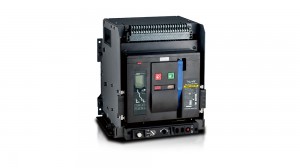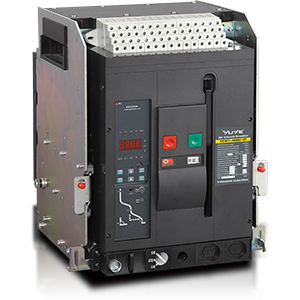Air circuit breakers (ACBs) are essential components in modern electrical systems, providing overload and short-circuit protection while ensuring safe operation of electrical equipment. As a leading manufacturer in the field of low-voltage electrical products, Yuye Electric Co., Ltd. is committed to researching and developing innovative solutions to improve the reliability and efficiency of electrical systems. However, despite the important role played by ACBs, they also face challenges. This blog aims to explore the three most common issues with air circuit breakers in the market today and shed light on how these issues affect performance and safety.
The first common problem with air circuit breakers is contact wear and degradation. Over time, the contacts within an ACB become severely worn from repeated opening and closing during normal operation. This wear causes an increase in resistance, which can lead to overheating and potential failure of the circuit breaker. In severe cases, this degradation can impair the circuit breaker’s ability to trip under fault conditions, posing a serious risk to equipment and personnel. Regular maintenance and inspections are essential to detect signs of contact wear early, replace them promptly, and ensure continued reliable operation of the ACB.
Another common problem faced by air circuit breakers is the accumulation of dust and debris within the mechanism. Air circuit breakers are designed to operate in a variety of environments, but exposure to dust, moisture, and other contaminants can affect their performance. The presence of foreign matter can obstruct moving parts, causing slow operation or completely preventing tripping when necessary. Additionally, dust accumulation can create arc paths, further exacerbating the risk of failure. To mitigate this issue, operators must implement daily cleaning and maintenance procedures to ensure air circuit breakers are free of contamination and functioning optimally.
The third major challenge associated with air circuit breakers is thermal instability. Air circuit breakers are designed to operate within a specific temperature range, and deviations from these parameters can cause performance issues. Factors such as ambient temperature fluctuations, insufficient ventilation, and excessive loads can all cause thermal instability, resulting in false tripping or failure to trip under fault conditions. This issue is particularly concerning in industrial environments where equipment operates continuously under varying loads. To address thermal instability, organizations must perform a thorough thermal assessment of their electrical systems, ensure that the air circuit breakers are suitable for their specific applications, and take adequate cooling measures.
While air circuit breakers play a vital role in protecting electrical systems, they are not immune to common issues that affect their performance and reliability. Issues such as contact wear, dust accumulation, and thermal instability can seriously affect the effectiveness of air circuit breakers, leading to potential safety hazards and inefficient operation. As a company dedicated to the research and development of low-voltage electrical products, Yuye Electric Co., Ltd. emphasizes the importance of regular maintenance, proper installation, and consideration of environmental factors when using air circuit breakers. By addressing these common challenges, organizations can increase the lifespan and reliability of electrical systems, ensuring safe and efficient operation for years to come.









